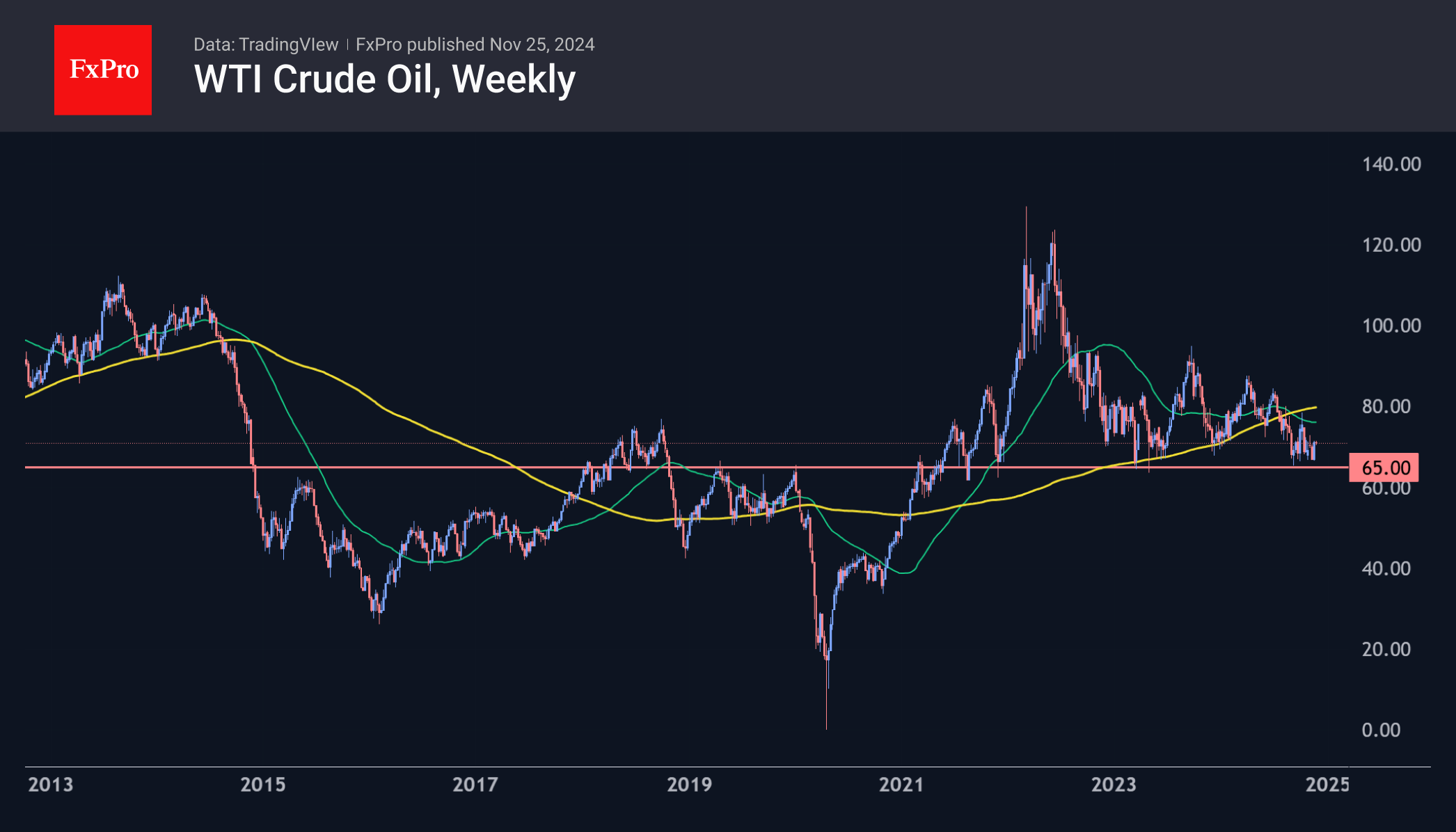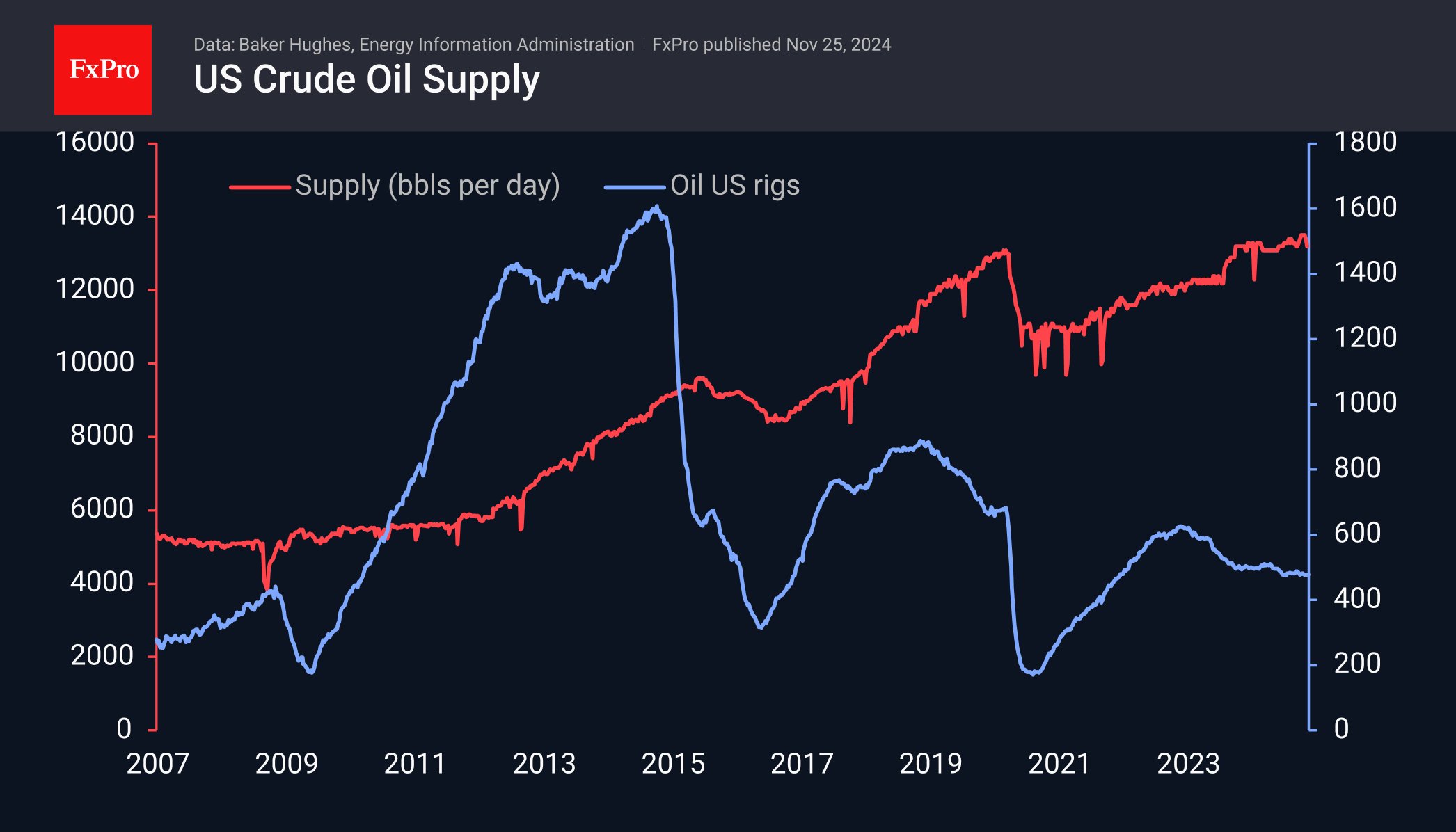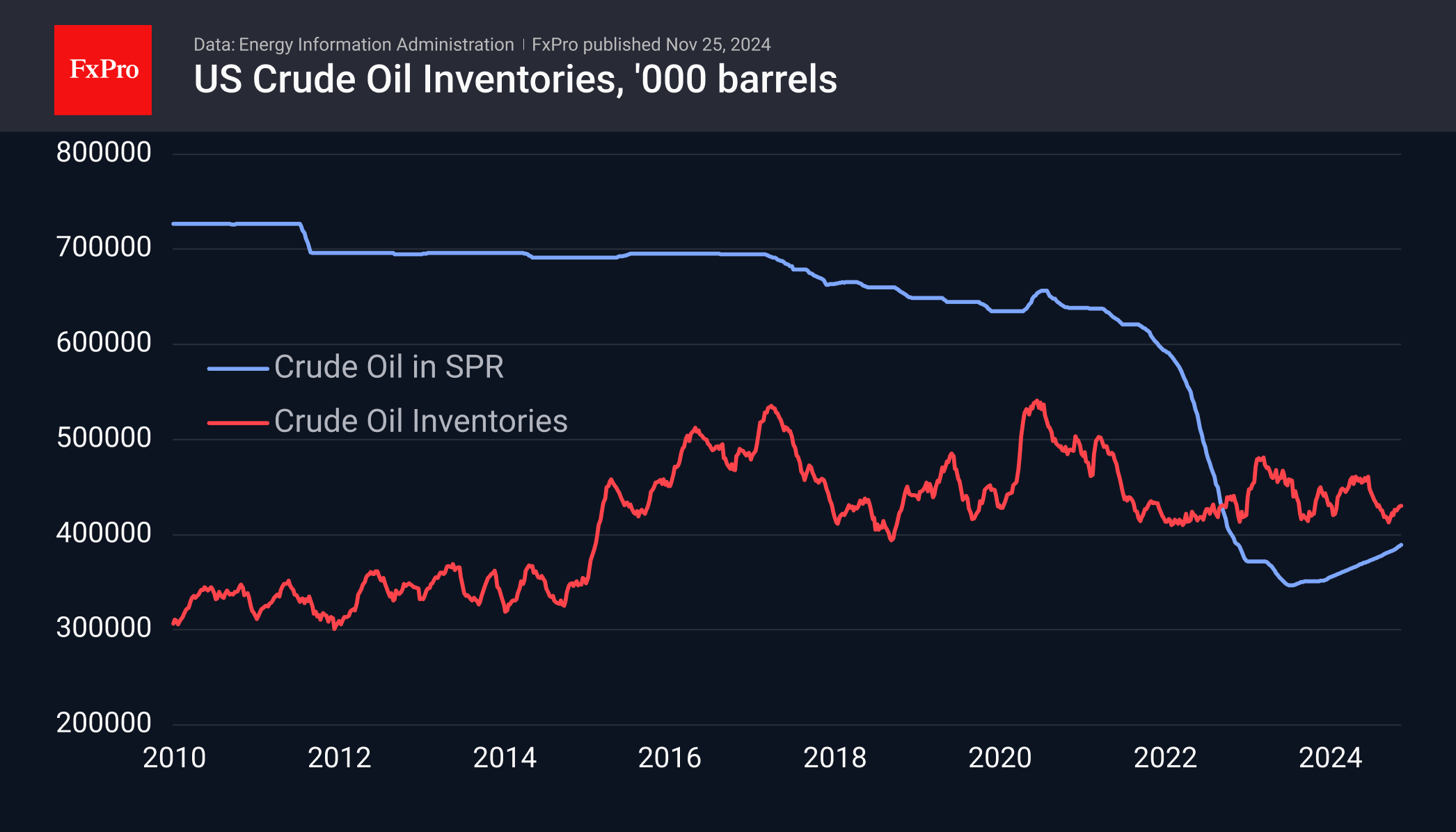Oil: rebounded but unlikely started to recover
November 25, 2024 @ 17:49 +03:00
Oil gained more than 7% last week, returning above $70 per barrel of WTI. Last week’s gains were driven by higher stakes in the Russia-Ukraine conflict (more powerful weapons and new energy sanctions). News of a 60-day ceasefire between Lebanon and Israel caused a pullback early this week, but oil quickly returned to the upside for several reasons.

On the political front, there is speculation that President-elect Trump’s administration will shift the IEA’s focus from renewables back to oil and gas, which has helped oil. In addition, there were rumours last week that OPEC+ will postpone the rejection of voluntary production cuts by the largest members beyond established quotas at its regular meeting on December 1st.

Weekly production and commercial inventory figures are also temporarily on the bullish side. Last week’s average daily production was 13.2 million barrels, compared to 13.4 the previous week and a high of 13.5 in the four weeks prior. Meanwhile, Friday’s Baker Hughes report showed 479 active oil rigs, which has remained slightly unchanged over the past eight weeks.
Although U.S. commercial oil inventories rose for a third week, the backlog is growing. Inventories are now 3% lower than at the same time last year. They remain near the lower end of the range of the past nine years, although it has been the new normal since 2015.
On the other hand, weakness in the eurozone and Chinese economies is dampening global energy demand, keeping prices near the lower end of the trading range of the past two years. We have often highlighted the increased OPEC+ activity, with the price of a barrel of Brent threatening to fall below $70. For WTI, these levels are close to $65. So far, the cartel has managed to keep the price above its pain point.

However, it is impossible to ignore the negative technical picture of the prices. Since the beginning of September, oil has been trading at range support, but it can’t get on a growth path and remains below the key 50- and 200-week moving averages.
Bears should also note that in 6 of the last 10 years, oil has fallen sharply in November-December. In 2014 and 2019, there were disagreements within OPEC. Granted, in the latter case, it wasn’t until 2020 that they started to have a dramatically negative impact on the price of oil, thanks to increased risk appetite in US equities. It looks like we are seeing something similar now.
The FxPro Analyst Team






